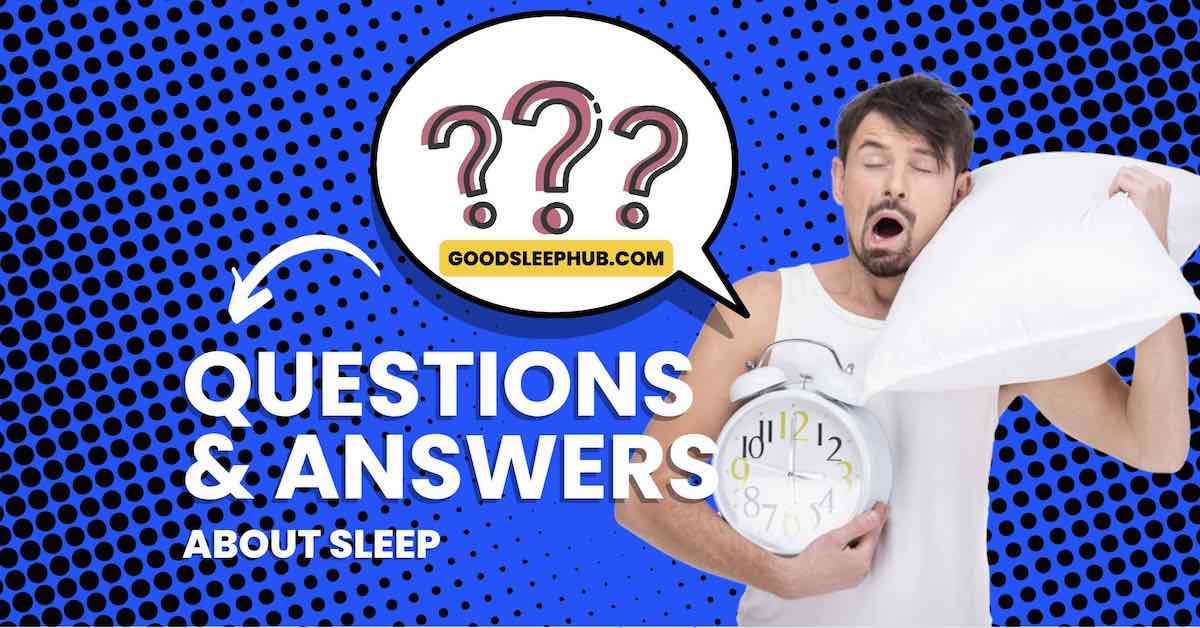
Understanding REM Sleep Behavior Disorder
REM Sleep Behavior Disorder (RBD) is a condition characterized by the acting out of dreams during the rapid eye movement (REM) stage of sleep. Such actions can be physically intense and may involve movements such as kicking, punching, or even jumping out of bed. These movements reflect the dreamer’s interactions within the dream world and can sometimes lead to injury to themselves or their sleeping partners.
What is REM Sleep and Why Is It Important?
REM sleep is one of the stages in our sleep cycle, distinguished by rapid eye movements, vivid dreaming, and temporary muscle paralysis. This stage is crucial for cognitive functions such as memory formation, learning, and emotional regulation. Normally, our bodies enter a state of atonia during REM sleep, which temporarily paralyzes most of our muscles. This prevents us from acting out our dreams physically.
However, in people with REM Sleep Behavior Disorder, this muscle paralysis is incomplete or absent. This permits the enactment of dreams and results in sudden and often violent movements during sleep.
The Symptoms of REM Sleep Behavior Disorder
The most prominent symptom of REM Sleep Behavior Disorder is the physical enactment of dreams. This can occur with varying frequency and severity but typically involves actions that mirror what is happening in the dream.
Movements During Sleep
Individuals with RBD may flail their arms, kick, or engage in more complex behaviors such as talking, yelling, or jumping. These actions can be quite dramatic and often startling to anyone observing them. Because these behaviors are directly linked to the dream content, they may appear coherent and purposeful, despite being unconscious movements.
Vocalizations
People with RBD may also talk, shout, or scream during their sleep. These vocalizations can be particularly distressing to those who share a bed or a room. They often stem from dream content that involves high emotions, such as fear or excitement, and can range from mumbling to loud, incoherent shouting.
Diagnosis of REM Sleep Behavior Disorder
Diagnosing REM Sleep Behavior Disorder typically involves a combination of methods. Medical professionals will first conduct a thorough evaluation of the patient’s medical history and symptoms. Family members or bed partners may also provide valuable insights into the observed behaviors.
Polysomnography
A key diagnostic tool for RBD is polysomnography, commonly known as a sleep study. This test records various physiological functions during sleep, including brain waves, eye movements, heart rate, and muscle activity. Polysomnography can confirm the absence of the usual muscle paralysis during REM sleep, which is indicative of RBD.
Clinical Interviews and Questionnaires
Doctors may use structured interviews and questionnaires to gather detailed information about the patient’s sleep patterns, dream content, and the presence of any related symptoms. This helps to differentiate RBD from other sleep disorders, such as sleepwalking or night terrors, which have differing characteristics and underlying causes.
Potential Causes of REM Sleep Behavior Disorder
The exact cause of REM Sleep Behavior Disorder is not fully understood. However, research suggests numerous factors that could contribute to the development of the disorder.
Neurological Factors
RBD is often associated with certain neurological conditions, such as Parkinson’s disease, Lewy body dementia, and multiple system atrophy. These disorders affect the parts of the brain involved in regulating REM sleep and muscle atonia, potentially leading to the symptoms of RBD.
Medication and Substance Use
Certain medications, particularly antidepressants, have been linked to the onset of RBD symptoms. Substance withdrawal, especially from alcohol or sedative-hypnotics, is another potential trigger. It is important for healthcare providers to consider these factors when evaluating patients for RBD.
Age and Gender
Statistics show that RBD is more common in older adults, particularly men over the age of 50. This could be due to the higher prevalence of associated neurological conditions in this demographic.
Treatment Options for REM Sleep Behavior Disorder
Managing REM Sleep Behavior Disorder involves a combination of approaches aimed at reducing symptoms, preventing injury, and addressing any underlying conditions.
Medications
The most commonly used medications for RBD are Clonazepam and Melatonin. Clonazepam, a benzodiazepine, helps to suppress the physical manifestations of dreams. Melatonin, a hormone that regulates sleep-wake cycles, has also been found to be effective in some patients. The choice of medication will depend on the individual’s medical history, the severity of symptoms, and the presence of any coexisting conditions.
Top 5 Sleep Aid Supplements Recommended By GoodSleepHub.com
Unisom SleepGels, Nighttime Sleep-aid, Diphenhydramine HCI 50 mg, 32 SoftGels
(as of June 6, 2024 12:16 GMT +00:00 - More infoProduct prices and availability are accurate as of the date/time indicated and are subject to change. Any price and availability information displayed on [relevant Amazon Site(s), as applicable] at the time of purchase will apply to the purchase of this product.)Unisom SleepTabs, Nighttime Sleep-aid, Doxylamine Succinate, 80 Tablets
30% Off (as of June 6, 2024 12:48 GMT +00:00 - More infoProduct prices and availability are accurate as of the date/time indicated and are subject to change. Any price and availability information displayed on [relevant Amazon Site(s), as applicable] at the time of purchase will apply to the purchase of this product.)Amazon Basic Care Night Time Sleep-Aid Liquid for Adults, Diphenhydramine HCl 50 mg, Mixed Berry Flavor, Packaging May Vary, 12 ...
(as of June 6, 2024 23:57 GMT +00:00 - More infoProduct prices and availability are accurate as of the date/time indicated and are subject to change. Any price and availability information displayed on [relevant Amazon Site(s), as applicable] at the time of purchase will apply to the purchase of this product.)Vicks ZzzQuil Nighttime Pain Relief Sleep Aid Liquid, Max Strength Pain Reliever, Black Cherry Flavored, 12 Fl Oz, Pack of 2
(as of June 6, 2024 12:48 GMT +00:00 - More infoProduct prices and availability are accurate as of the date/time indicated and are subject to change. Any price and availability information displayed on [relevant Amazon Site(s), as applicable] at the time of purchase will apply to the purchase of this product.)ZzzQuil, Sleep Aid, Nighttime Sleep Aid Liquid, 50 mg Diphenhydramine HCl, Fall Asleep Fast, Non-Habit Forming, Warming Berry Fl...
(as of June 6, 2024 23:53 GMT +00:00 - More infoProduct prices and availability are accurate as of the date/time indicated and are subject to change. Any price and availability information displayed on [relevant Amazon Site(s), as applicable] at the time of purchase will apply to the purchase of this product.)Safety Measures
Ensuring a safe sleeping environment is crucial for individuals with RBD. This can involve:
– Placing mats or cushions around the bed to prevent injury.
– Using bed rails or securing the bed to reduce the risk of falling out.
– Removing sharp or dangerous objects from the vicinity of the bed.
– In some cases, sleeping in a separate bed to minimize the risk of harming a bed partner.
Behavioral Strategies
Patients may also benefit from techniques designed to improve sleep hygiene, such as maintaining a consistent sleep schedule, avoiding caffeine, and establishing a relaxing bedtime ritual. Cognitive-behavioral therapy (CBT) can help to address any underlying stress or anxiety, which may exacerbate RBD symptoms.
Living with REM Sleep Behavior Disorder
Coping with REM Sleep Behavior Disorder can be challenging, but with the right combination of treatments and lifestyle adjustments, many individuals can successfully manage their symptoms and maintain a good quality of life.
Education and Support
Educating oneself and loved ones about the disorder is essential. Understanding the condition can help to reduce anxiety and improve cooperation in managing the symptoms. Support groups and counseling can provide additional emotional support and practical advice.
Monitoring and Adaptation
Regular follow-up appointments with healthcare providers are important to monitor the condition and adjust treatments as needed. As the disorder can be progressive, particularly if associated with neurodegenerative diseases, staying proactive in managing symptoms is essential.
Finishing Thoughts
REM Sleep Behavior Disorder is a serious but manageable condition that affects how our bodies behave during the dream state. Recognizing the symptoms, such as acting out dreams physically and vocalizing, is the first step in seeking help. With a comprehensive approach that includes medical treatment, safety measures, and lifestyle changes, individuals with RBD can lead safer and more comfortable lives. Always consult healthcare professionals for an accurate diagnosis and tailored treatment plan, as individual needs can vary widely. Understanding and managing REM Sleep Behavior Disorder allows for improved well-being and a better night’s sleep.












